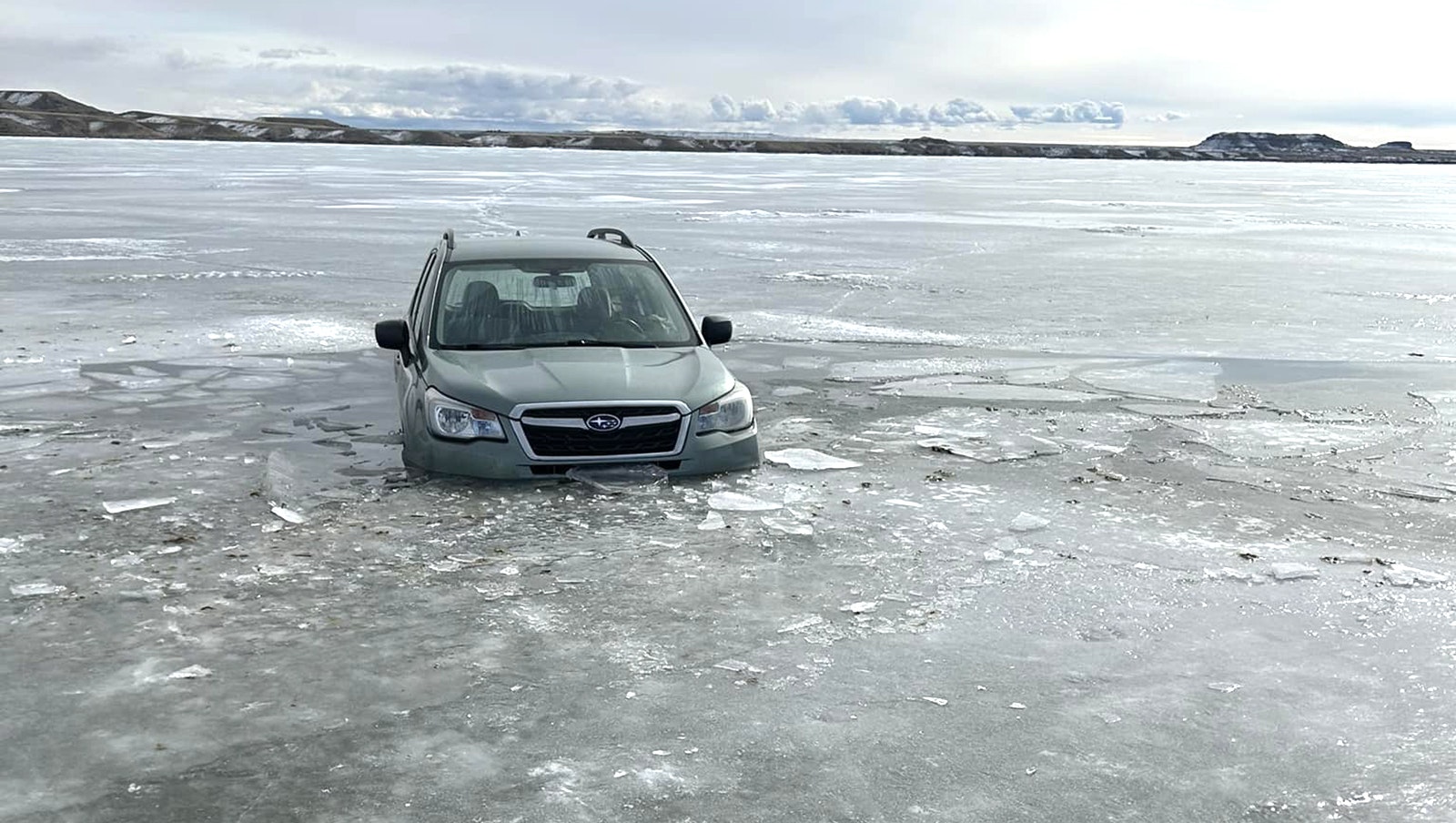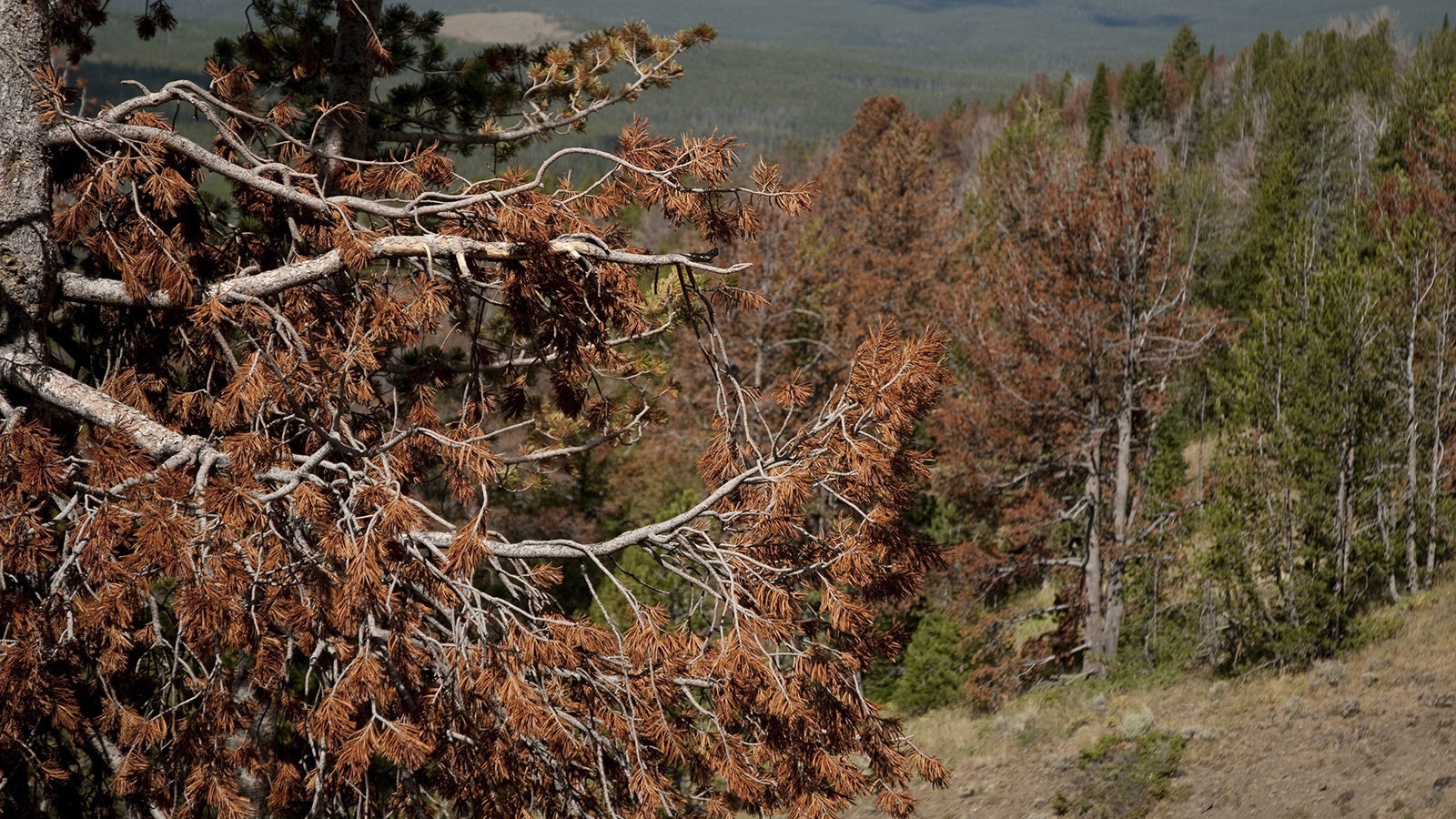People have been driving on thin ice at Boysen Reservoir between Riverton and Thermopolis in central Wyoming.
Dennis Leonhardt, owner of Specialty Towing in Thermopolis, said he’s pulled two vehicles out of the ice-covered reservoir in the last week.
“The first one was driving straight forward and fell in what was like a ditch,” he told Cowboy State Daily. “It just dropped the front tires, but wasn’t buried or anything. The second one looked like they were going out and went to turn around and come back and fell through the ice.”
Neither vehicle was irretrievable, Leonhardt said, adding there was only a few feet of water in both spots where the vehicles broke through the ice.
“It was over the tires, but not up to the windows or anything like that,” he said.
Still, getting towed out of an ice-covered lake is an expensive mistake. And it’s not something every towing company can handle, which might explain the “specialty” in Leonhardt’s Specialty Towing.
“It’s kind of a specialized thing,” he said about an icy lake rescue. “It's not something that everybody does around here.”
No Guarantees
Research suggests that ice needs to be between 8 and 12 inches thick to support cars and light trucks without falling through. Even then, there are no guarantees that a Subaru won’t go through.
Cowboy State Daily meteorologist Don Day said there’s more to melting ice than persistent warmth. The erratic temperatures of the current winter have been decreasing the stability of seemingly solid ice.
“It’s not just warmer temperatures, but the alternating cold and warm periods weaken the ice,” he said. “Even in cold periods, ice can be unstable. There are no guarantees it is ever safe to drive vehicles on ice.”
Day also said there’s an added risk of water level changes in reservoirs. Water levels lower over time, which increases the fragility of the overlying ice.
Leonhardt knows there have been some “warm channels” of water under Boysen’s ice, steadily decreasing its strength. He’d be hesitant to take any vehicles onto the reservoir now.
“There’s still a lot of people ice fishing out there,” he said. “But then they've taken a full-size vehicle out at the wrong time or the wrong spot. That becomes a little problem.”
Ice must only be between 3 and 4 inches thick for safe ice fishing, and Boysen Reservoir should still be safe for that activity. Beyond that, Leonhardt would caution against taking any vehicle onto the ice unless a costly towing bill isn’t a big deal.
“We've had some pretty warm weather lately, and (the ice) is not as thick as they like,” he said. “We've had side-by-sides go through the ice before, too. That does happen. They would have been safe a month ago, but now, not so much.”
Happens All Over
Vehicles breaking through the ice on Wyoming lakes and reservoirs happens all over the Cowboy State.
Josiah Simburger, assistant superintendent of Seminoe State Park, said the ice covering the reservoir is “patchy,” and he discourages anyone from driving a vehicle onto it.
“We have open water in some places,” he said. “And there’s been a lot of warm weather lately. It’s safe for ice fishing, but not vehicles.”
Keyhole State Park Superintendent Greg Devereaux told Cowboy State Daily that the solid, clear ice covering the reservoir is “some of the best we’ve seen in a long time.” Even so, he encourages people to use their discretion if planning to take a vehicle onto the ice since it’s an inherently risky thing to do.
“We did have one side-by-side go down,” he said. “But it was on a pressure ridge by some rocks, so it wasn't the best place to be driving. Ice is never really a safe thing. You always got to use your best judgment, common sense and discretion.”
Andrew Rossi can be reached at arossi@cowboystatedaily.com.





